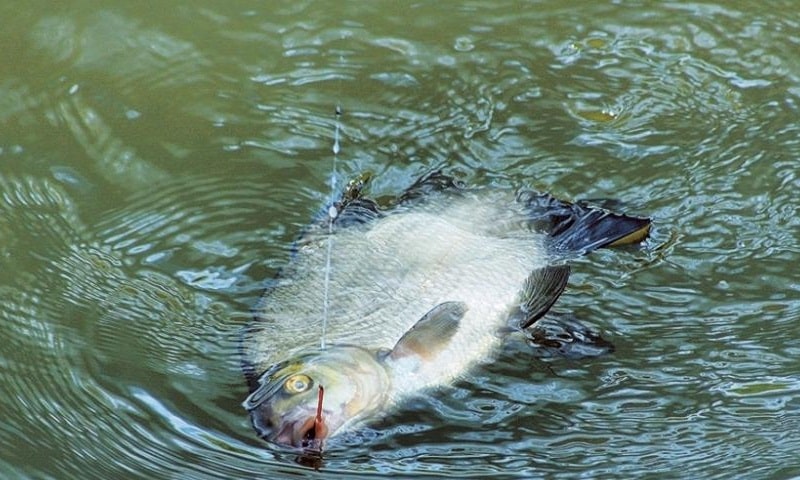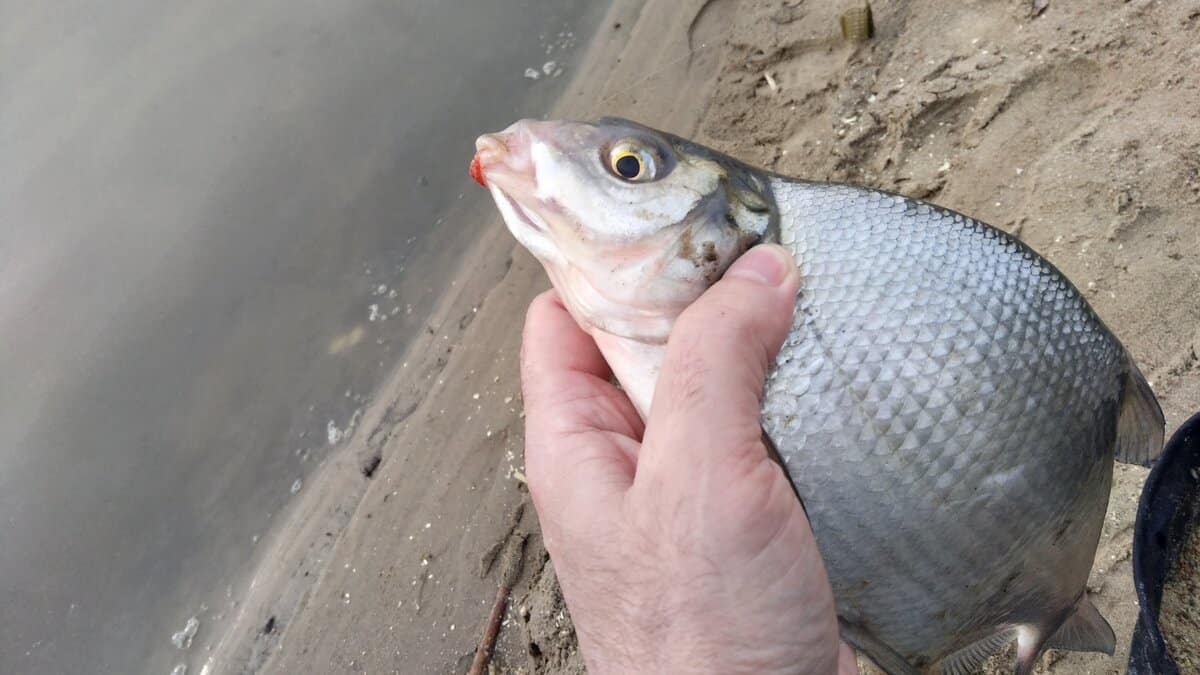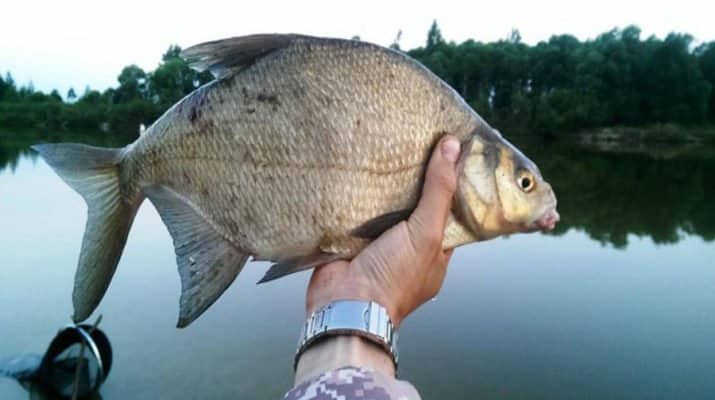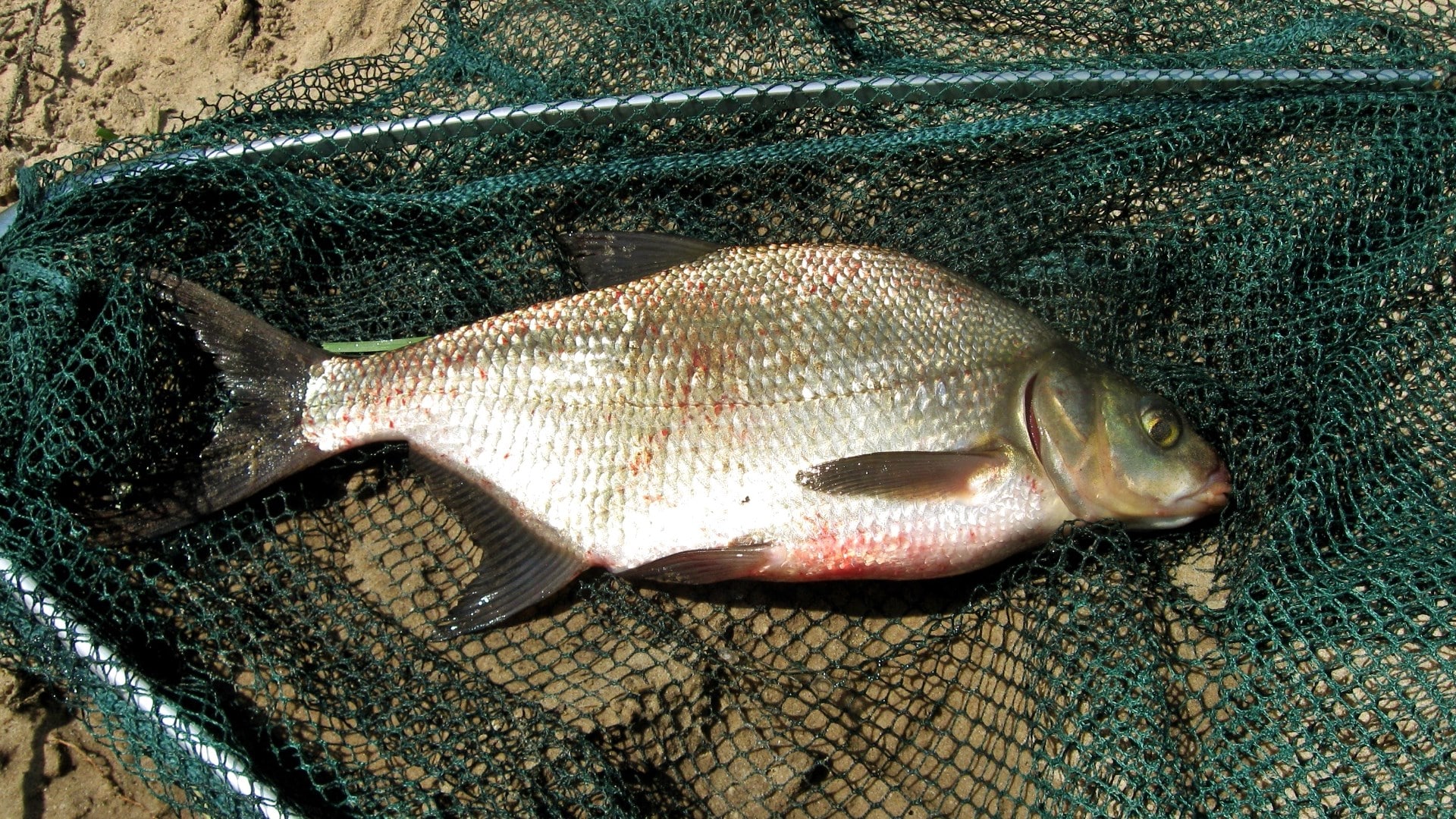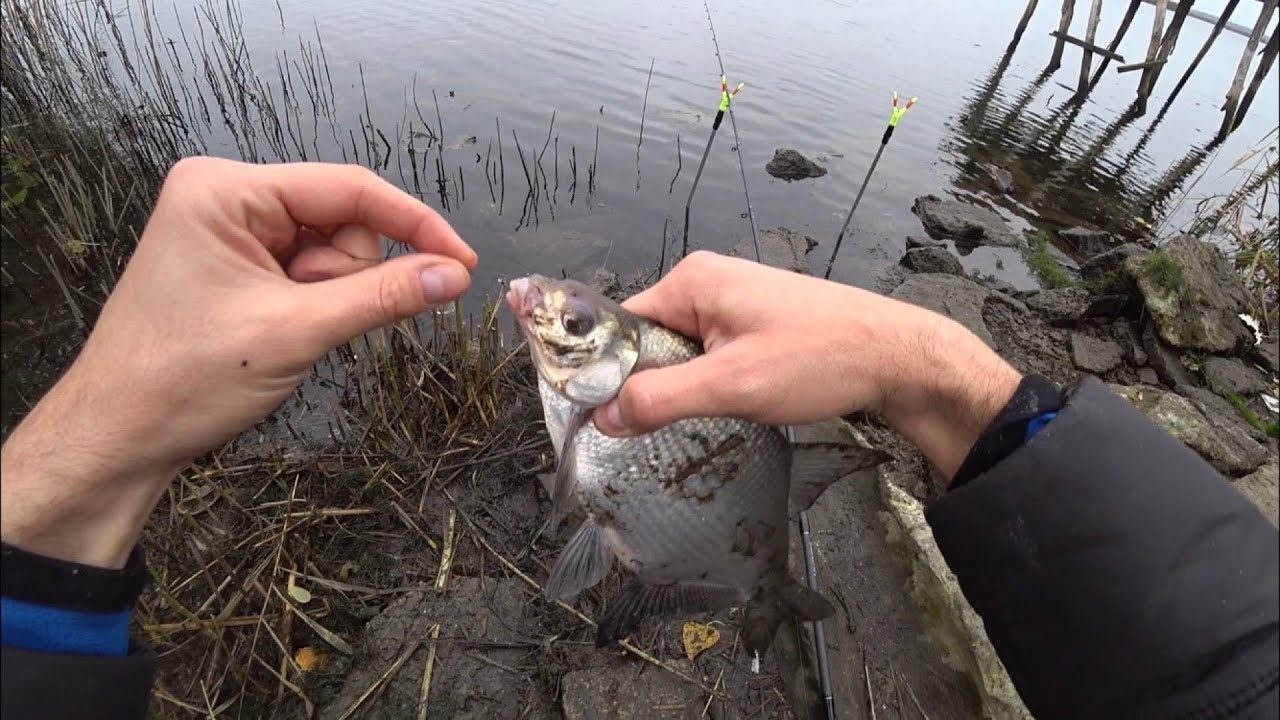Catching bream on a pond in the spring is quite interesting and exciting. Before spawning, fish willingly go to almost any bait, so even on the worst day, the fisherman will not be left without a catch. In addition, there is an opinion that it is easiest to catch a trophy specimen of bream in April. In order for the fishing to be successful, and the catch to be heroic, it is worth getting acquainted with the peculiarity of catching freshwater fish with different gear before leaving for the reservoir.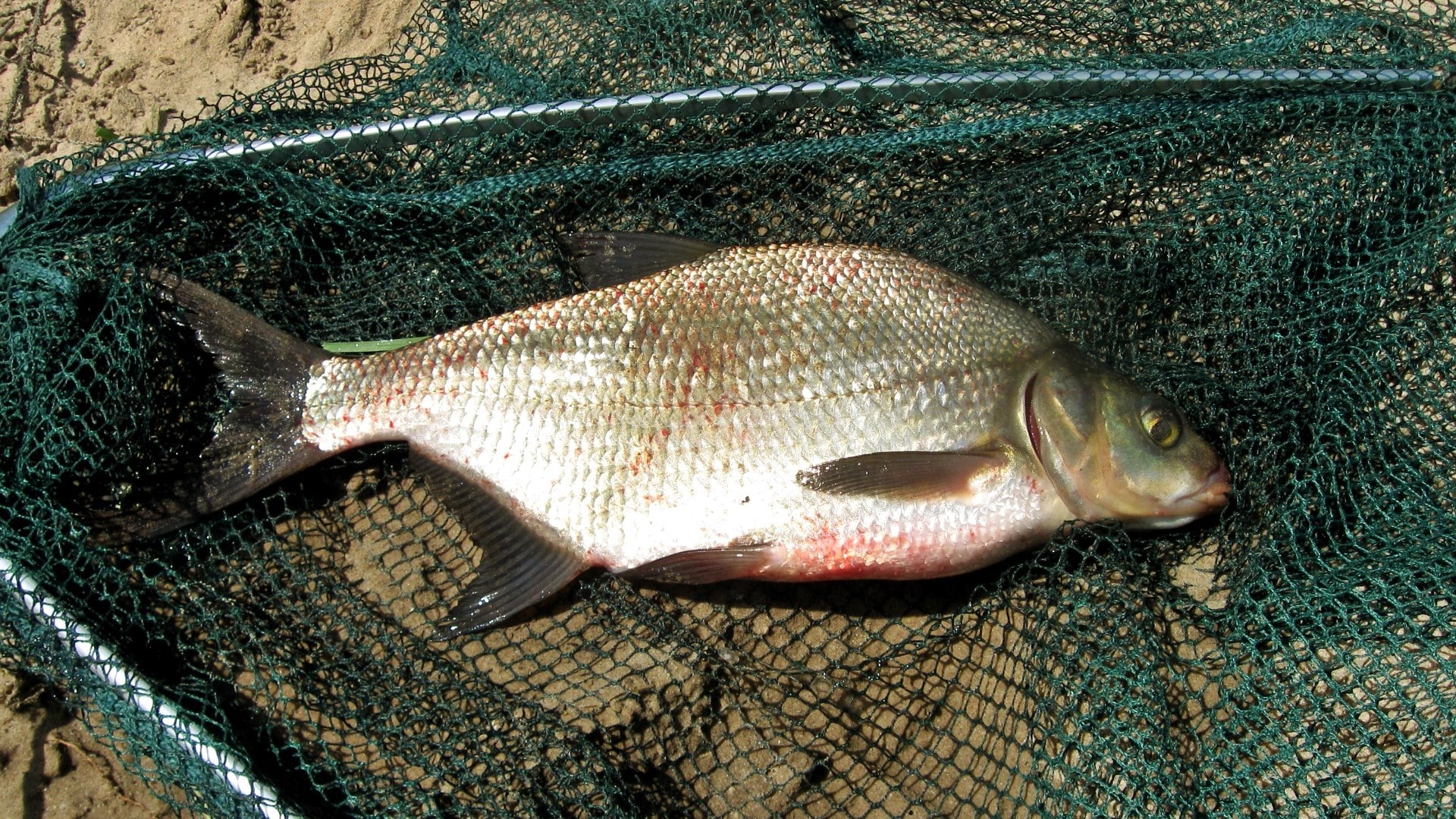
- Features of the behavior of a bream in the spring, when it starts to peck – calendar
- March bream
- April
- May
- Where to look for bream in spring
- What baits and baits are used when catching spring bream
- fishing technique
- Features of fishing on a float
- Features of fishing on feeder tackle
- Features of fishing on the donk
- Catching on a spring
- Features of fishing on a bait with a mormyshka and with a side nod
- Fishing for bream in the spring from a boat
- Tips and secrets of experienced
- Поделиться ссылкой:
Features of the behavior of a bream in the spring, when it starts to peck – calendar
As soon as the ice melts on the pond, anglers can go fishing for bream. When the water starts to warm up, the bite of freshwater fish improves. Closer to spawning, the bream comes close to the shore. While on the pond, it is important not to make noise so as not to frighten away the cautious fish.
Note! Stable biting of bream is observed at the end of spring in May.
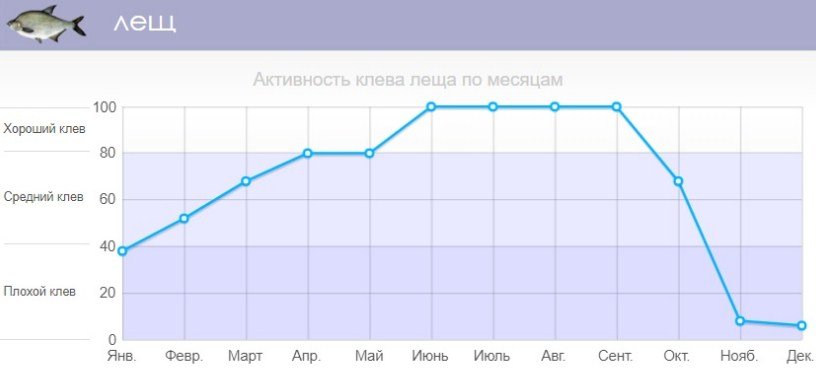
March bream
At the beginning of spring, a representative of the carp family rises from the wintering pits and begins to take animal bait, during this period it is worth offering
bloodworm ,
red worm and
maggot bream .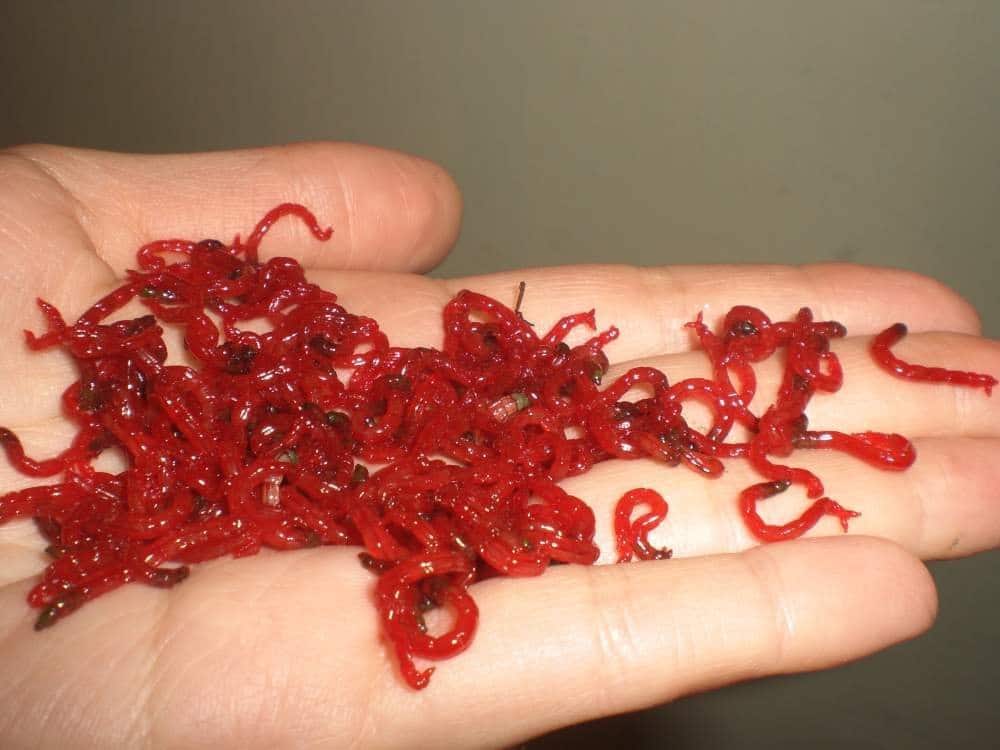
April
Towards the end of April, bream spawning begins. It is during this period that there is a chance to catch a trophy specimen of fish. On the hook it is necessary to put small high-calorie baits. In the middle of spring, the bream will gladly eat worms and bloodworms,
corn and
peas .
May
At the end of spring, representatives of the carp family recover after spawning. The fish actively takes vegetable baits in the form of peas, corn, semolina, steamed wheat and
barley . You can put a dung worm with maggot on the hook. The peak of fish activity falls on May 10-30. Catching bream in the spring in May – video report from the shore of the reservoir: https://youtu.be/t1d51tgE17g
Where to look for bream in spring
Going on a fishing trip, it is necessary not only to prepare gear, but also to find out the most promising places for fishing in the reservoir. In early spring, bream often enters backwaters and lakes. Toward the end of April, fish can be found near:
- dams;
- pits;
- oxbows.
It is also worth catching areas of the reservoir with a clay and rocky bottom. Promising points on unfamiliar water bodies, especially large ones, should be searched using a boat or casting echo sounder,
marker cargo , having studied a depth map, or having learned information from local fishermen.
Interesting to know! The duration of spawning depends on weather conditions. And the parking lots of bream during spawning are also near spawning grounds. Bream spawns in relatively small areas of the reservoir, where the water is already warmed up.
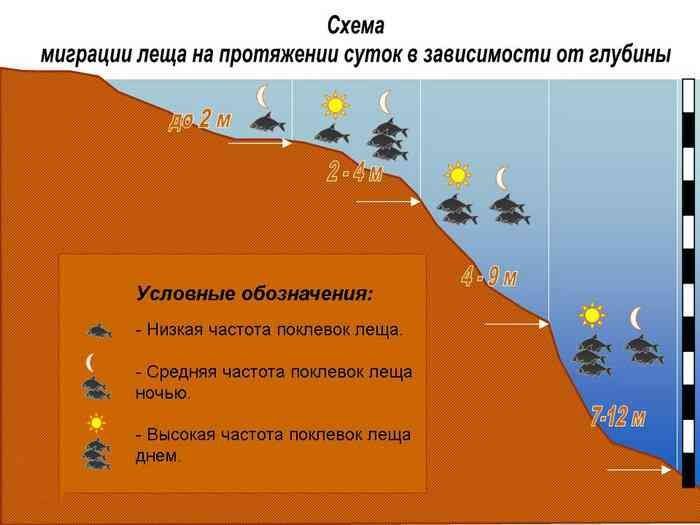
What baits and baits are used when catching spring bream
When choosing a nozzle, it is worth considering the weather conditions. In cases where fishing is carried out in cold water, it is recommended to hook: bloodworm, maggot, dung/earthworm or caddisfly. If you plant several larvae at the same time, you can create a fairly voluminous bait. Sandwiches made of worm/maggot, worm/barley, worm/caddis flies and others work well. With the warming of the water (usually May in the middle zone of the Russian Federation), the bream is excellent for plant baits of the type:
- canned corn ;
- steamed peas ;
- boiled barley ;
- bread crumb;
- mastyrki;
- decoys.

Interesting to know! Spring bream goes well on foam balls.
Every experienced fisherman knows that bream love sweet tastes and smells. That is why in the
bait mixture , it is worth adding a small amount:
- pears;
- coriander;
- vanilla;
- cinnamon;
- dry milk.
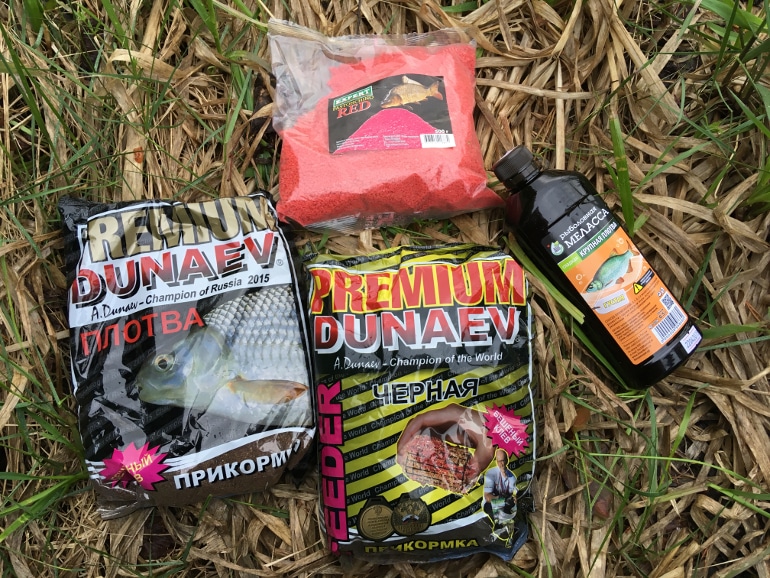
millet and
barley are often used . If fishing is carried out on an animal nozzle, it is necessary to include it in the composition of the bait mixture.
Advice! If no bites are observed for a long time, it is worth putting a sandwich on the hook (maggot with a bloodworm or a caddis fly with a dung worm).
fishing technique
After promising places for fishing are fed, you need to choose tackle. Float firefly miniature sizes suitable for fishing in the dark and over long distances, easy to carry. Comes with a charger. Easily charged in field conditions from a cigarette lighter, laptop, power bank.
Features of fishing on a float
It is in the spring that you can successfully catch a scavenger and a medium-sized bream on a float tackle, while the fish rubs close to the shore. Below you can find the recommendations of experienced fishermen regarding the collection of float gear for bream:
- Rod . The length of the float gear should reach 5-8 meters. It is advisable to give preference to lightweight models that work well on wiring.
- Coil . It is recommended to use an inertialess reel with a friction clutch. 2000-2500 Shimano.
- Fishing line . For bream fishing, a monofilament with a thickness of 0.25 mm is perfectly used.
- Leash . For the manufacture of the leash, a 0.18 mm fishing line is used.
- Hooks and float . The most suitable hook size is 8. It is better to purchase a drop-shaped, spindle-shaped float.
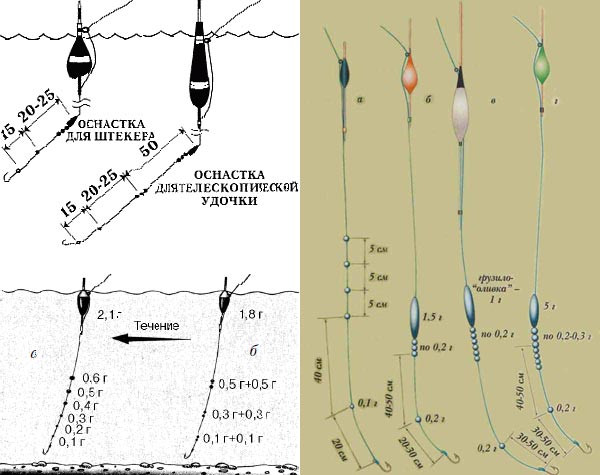
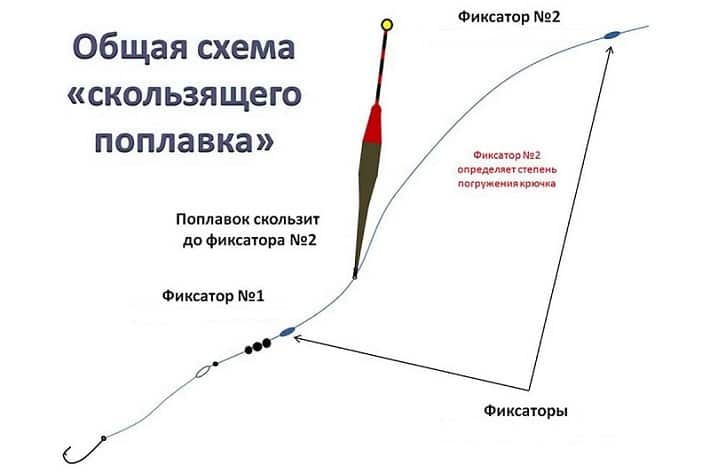
Features of fishing on feeder tackle
In cases where it is planned to cast equipment at a distance of more than 20-30 meters from the coastline,
feeder gear should be preferred . With a test load, you can decide on your own based on the depths, current strength, casting distance. Universal test solution 40-60 grams. The rod is equipped with a reel with a spool no more than 2500 Shimano. For bream fishing, a fishing line with a thickness of 0.25 mm is suitable. The leash should be smaller in diameter by 0.02-0.04 mm.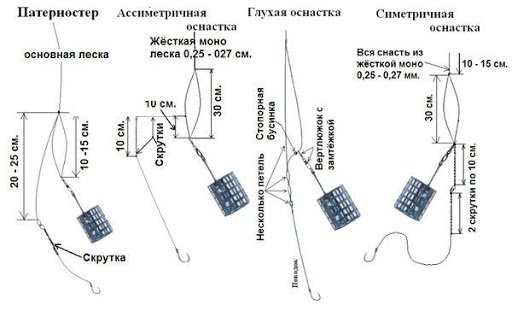
structures. Depending on the fishing conditions, you can choose the weight and shape of the cormack. Experts recommend using weighted triangular structures when fishing for bream in the current. When catching a small pond or lake, you can use feeders of any design.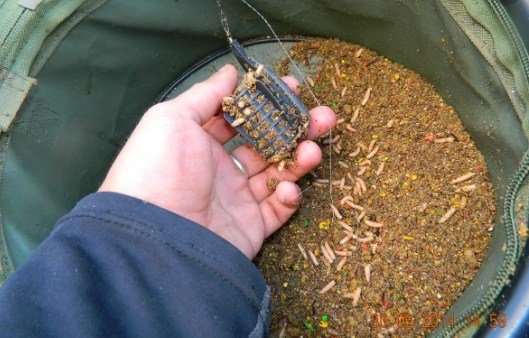
Features of fishing on the donk
Donka is the most popular tackle, which is most often used for spring fishing. The equipment includes:
- rod;
- coil;
- network;
- sinker;
- underwater float (optional);
- leash;
- hooks.
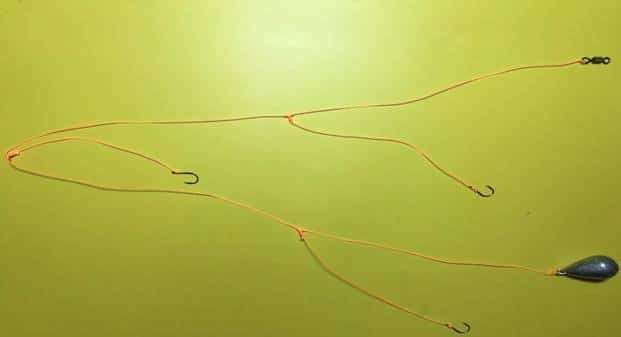
bite signaling device or a bell indicator. When it starts to ring, the anglers perform hooking and drag the fish to the shore.
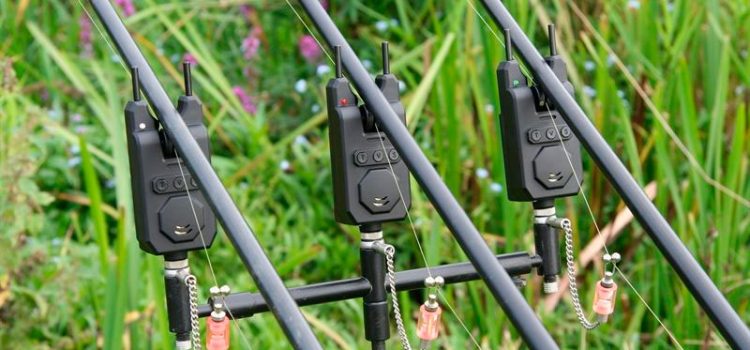
bottom gear , anglers often use a feeder. The most popular fixture is a stainless steel spring. The bites of the bream on the bottom gear are always confident. However, it is worth remembering that the bream often manages to spit out the bait, sensing a catch. Therefore, at the first blow, it is important to strike as soon as possible. The fish is pulled out quickly so that it does not have time to cross the curb and go into the snag. Catching bream in the spring on the bottom: https://youtu.be/EEZjEVxHPJ0
Catching on a spring
When fishing with a spring, a mini-feeder fixed at the tip of the main line is included in the equipment. The bait mixture is placed inside the spring. Leads with hooks are tied to the fishing line. The bream will draw them in at the same time as the bait.
Features of fishing on a bait with a mormyshka and with a side nod
To catch bream with a mormyshka with a side nod, the fisherman will need a telescopic tackle with a medium-fast action, the length of which reaches 5 meters. If you plan to cast at a distance of more than 15 meters, you should purchase a rod with a length of 7 meters. To fix the nod to the top of the tackle, you can use a rubber barrel and 2 plastic rings. A slit is made in the barrel, into which the top is blown. Having made a through hole, the fishermen put a nod into it. Then they put on rings that securely press the barrels to the top.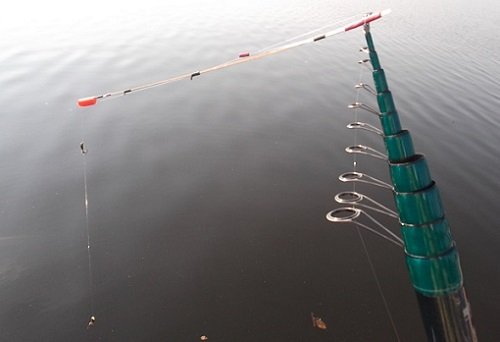
- urals;
- nymphs;
- ant.
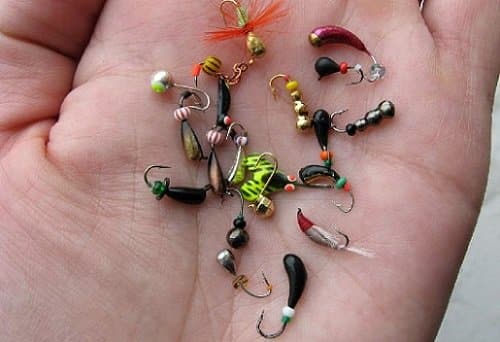
Fishing for bream in the spring from a boat
The recommended length of gear for angling bream is up to 4 meters. A reel seat is installed on the rod and equipped with a significant supply of fishing line. The recommended line thickness is 0.16-0.2 mm. If the depth of the fished area of the reservoir does not exceed 5 meters, it is advisable to use a float-type rig. At greater depths, it is worth using a sliding float equipment, feeder or donkey. Having anchored the boat, the angler feeds the fishing point, after which he carefully casts so as not to frighten away the fish.
Boilies and
pelletswill be an excellent bait for bream in the spring months. You can use worms and maggots, but keep in mind that they will attract the attention of small fish. In the case of night feeder fishing, care should be taken in advance to stretch the rope in the direction of casting, as in the dark the fisherman quickly loses the landmarks chosen during the daytime.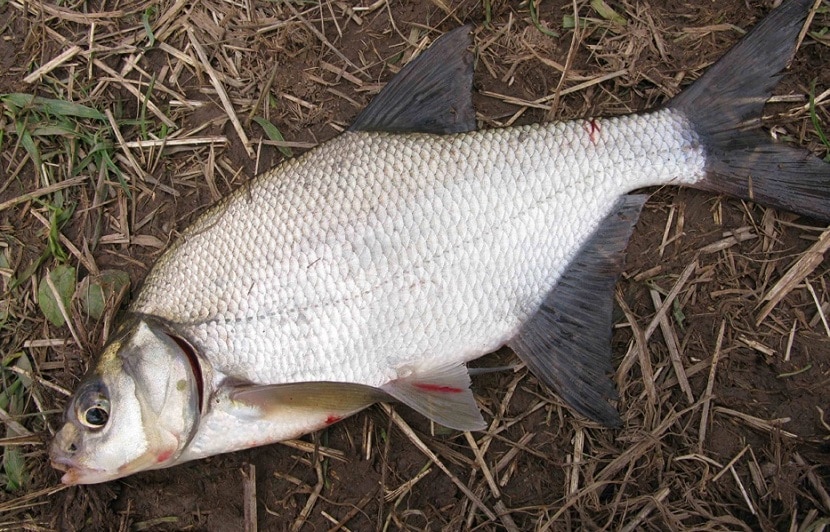
Tips and secrets of experienced
Expert advice often helps novice fishermen learn the features of catching fish. Below you can find the secrets of successful fishing for bream:
- At night, cautious fish become less suspicious . It is at this time of day that the chances of catching trophy specimens increase.
- For catching a reservoir in early spring, it is best to choose areas with a rocky or clay bottom . In addition, it is worth remembering that bream are attracted to places that are clear of underwater vegetation.
- The bream responds well to a sandwich, which consists of maggot and worm or bloodworm and maggot . If bites are not observed for a long time, it is necessary to try changing the combination of nozzle and bait.
- For bream fishing, only fresh bait mix can be used .
- Undercutting is done carefully so as not to tear the tender lip of a representative of the carp family.
- In the event of a prolonged absence of bites , it is worth trying to change the bait .
- Bait in the spring should have a sweetish flavor (pear, apple, vanilla, cinnamon), this will attract the attention of the bream.
